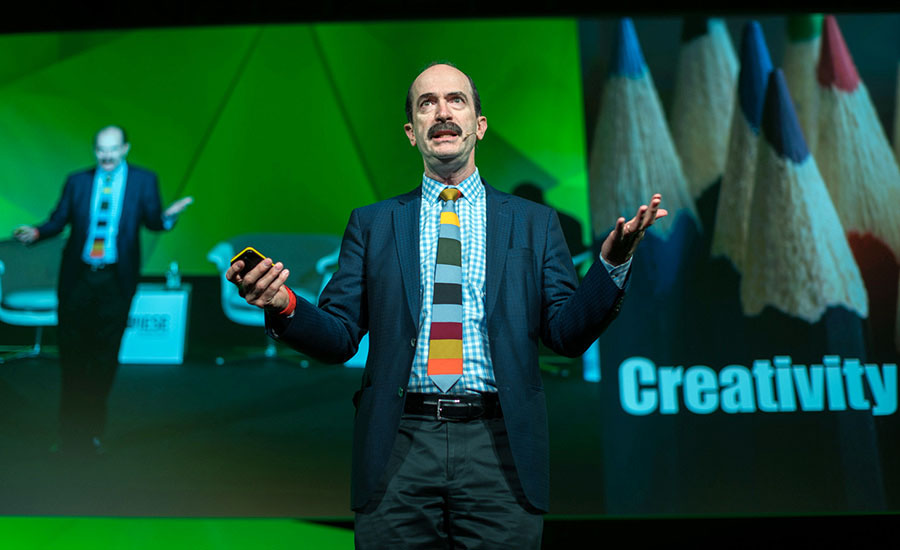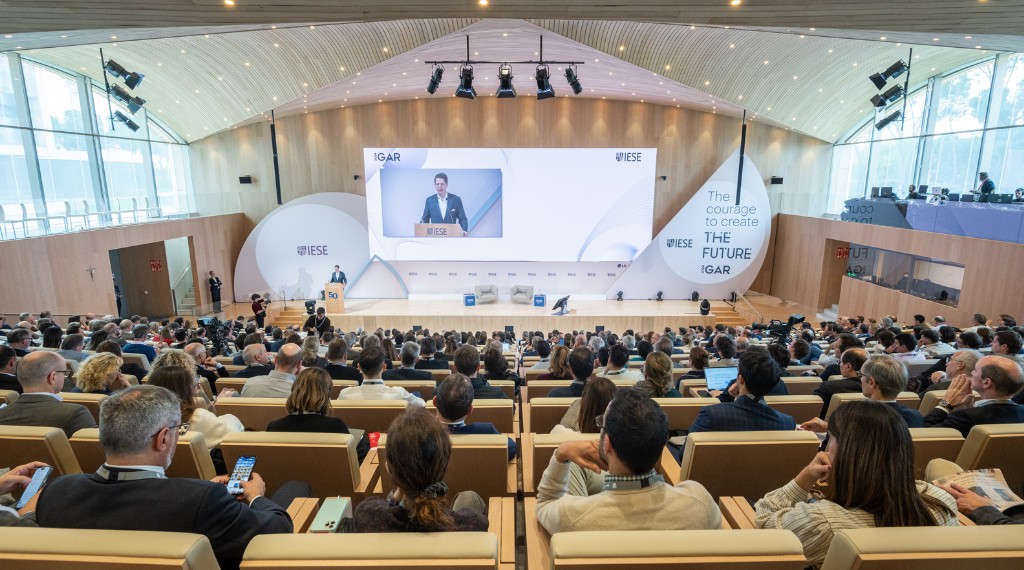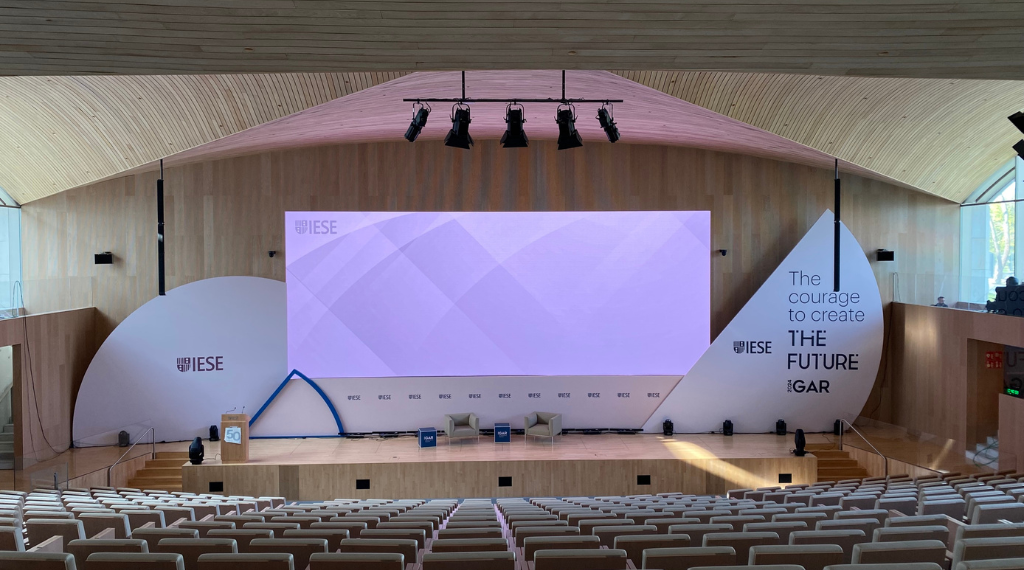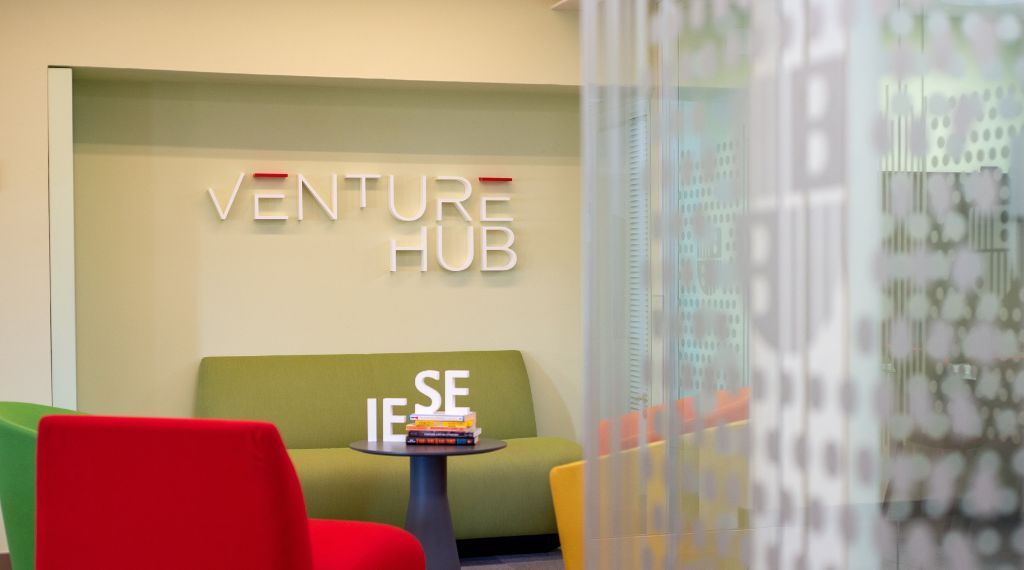Stories
“Creativity Driving Innovation Is at the Heart of the Matter”
IDEO's Tom Kelley and other innovators at Global Alumni Reunion
November 17, 2017

Empathy. Creativity. Resilience. Adventurousness. Confidence. Fostering innovation in the workplace often starts by developing the human qualities that make big ideas possible.
That was one of the main themes of IESE’s 2017 Global Alumni Reunion being held in Madrid Nov. 16-18 under the theme “Play New Rules: The Power of Business Innovation”. Nearly 3,000 alumni from 40 countries registered for the event, which started with a day of visits to innovation-leading companies, and closed with a morning of sports events for charity.
In between, the reunion featured an academic program with an inspiring line-up of speakers who looked at the crucial importance of innovation in the workplace.
“Creativity driving innovation tended to live at the edge of the enterprise before, but now we’re at the heart of the matter,” said Tom Kelley, partner of industrial product design firm IDEO. For Kelley, it all starts with generating what he terms “creative confidence” among employees. That means unlocking the creative potential that all people have, and making employees feel comfortable about pursuing new ideas.
And how do you unlock that creative potential? By dipping into the toolset of design thinking. That involves three things: empathy, experimentation and storytelling. Empathy involves considering the human needs behind any product, experimentation requires losing our fear of failure, and storytelling means moving beyond the data to find the narrative that resonates with customers.
Bill McDermott, CEO of business software company SAP, drawing on his life story and varied career experiences, returned time and again to the lessons he learned as a teenager: that whatever your work, you have to consider the needs of the customer first and foremost. That means approaching business software as a way to help the world run better and to improve people’s lives, rather than as a purely technological tool. “You have to have the data, the core processes, the network, and then you can apply the deep learning in what computers can do to help humans.”
It also requires being intellectually adventurous, he said, so that companies can create products for consumers that they didn’t know they needed, but that they soon can’t live without.
Innovation At Microsoft and Google, IBM and HP
And yet innovation means different things to different companies. Creating and maintaining a culture of innovation is not the same at a start-up as it is to a well-established multinational with tens of thousands of employees.
A panel of top executives from Google, HP, IBM and Microsoft offered a unique look at how each of those companies is grappling with the need to constantly innovate.
IBM left low-value businesses in order to focus on core areas of software, hardware and services, and on cloud technology, data, artificial intelligence, and security. In the process, the company learned the importance of closing the gap between strategy and execution, of perseverance and resilience in implementing change, and of creating an adaptable working culture. “Transformation is a long-distance race,” said Marta Martínez, general manager of IBM Spain, Portugal, Greece and Israel.
“We want to be the company that can learn it all, and the people who can learn it all. Not the company that knows it all,” said Pilar López, head of Microsoft Spain. In its pursuit of innovation, Microsoft re-crafted its mission to ensure that it was answering the needs of people and organizations, and seeking to improve world at large. That requires authentic leaders and ensuring employees are invested in the culture, as well as humility.
HP, meanwhile, split itself half in order to be more agile and to create a culture of greater innovation. It began listening more to customers, seeking collaboration within teams and with outside companies, engaging employees in new ways, and making sure that leaders were effective because they were genuine and showed integrity. “Leadership needs to be more and more by influence,” said Helena Herrero, president and CEO, HP Spain and Portugal.
Even newer entrants have to make sure they aren’t losing their edge. “The reality is that we are in constant change as a company,” said Fuencisla Clemares, Google’s country manager for Spain and Portugal. Even as it has shifted its focus from desktop to mobile to artificial intelligence, Google has stayed true to the user, to its flexible work culture and to innovative leadership. “We look for people who are able to think very, very big,” Clemares said.
Innovation Isn’t Just for Tech Companies
And it’s not just tech companies that are required to change. Félix Sanz Roldán, director of Spain’s National Intelligence Center, talked about how the intelligence agency has evolved over the decades, now taking on issues such as radical jihadism and cybersecurity.
Despite that, the mission, just as in the corporate world, is at its heart: providing the government with the information it needs to craft sound policy and actions, in order to create a safe society. “We are the secret service. But we are infinitely more service than secret.”
And in the end, innovation hinges on dreaming big. “Set that dream as high as you possibly can,” says SAP’s McDermott. “Get up, get out and get on with it, because winners rise.”


